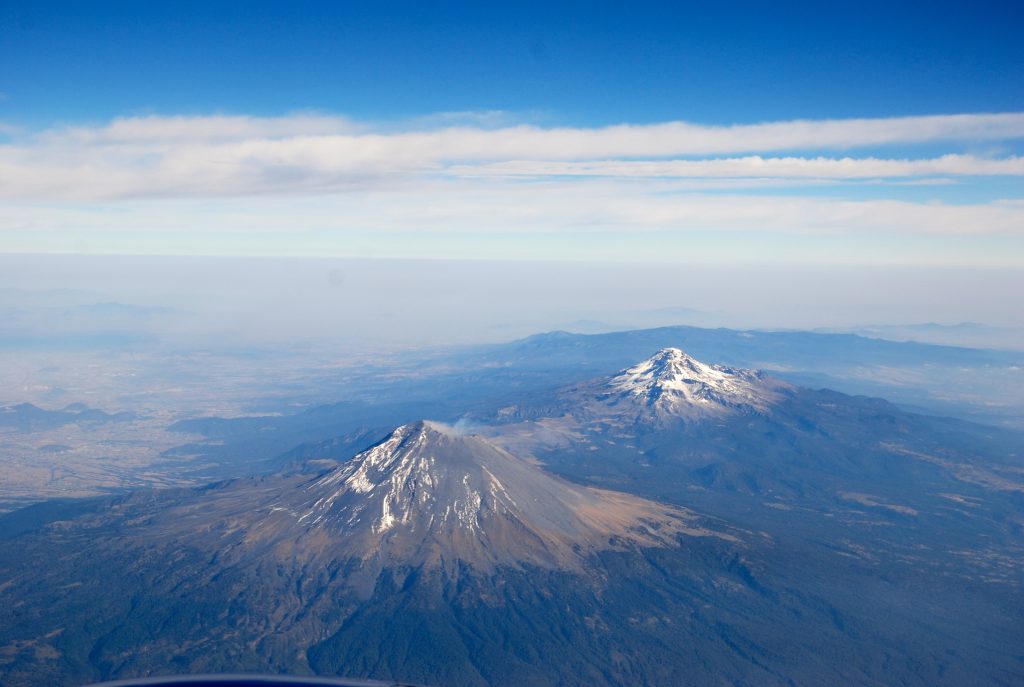It’s one of your life’s most consequential decisions. It will tug at your sense of self, rationally and emotionally. You’ll have to run the gauntlet of disbelief and incredulity from your best friends and closest family members: the decision to live overseas. Honest information and thoughtful self-evaluation can liberate your inner aspirations, enhance your quality of life, rejuvenate your curiosity about our broader world, and break you and your family out of a financial future riddled with uncertainty and doubt.
Mexico News Daily, in partnership with Jalisco-based Choosing Mexico LLC is publishing the first definitive Mexico for Living Rating protocol, a comprehensive exploration of viable long-term living locations (cities, resorts, and towns) across many of Mexico’s 32 states. Over the next weeks, MND will be your advisor as we uncover, analyze, and compare the truths and myths of living in Mexico, using a unique six-category rating system. Created by Choosing Mexico in close consultation with MND, this initiative explores everyday living essentials using a one to five “rating” designed to reveal criteria you can use in your move to Mexico deliberations. As this editorial series unfolds, you’ll have thought-provoking guidance, steering you toward a short list of viable Mexico locations (perhaps a village in the sun?) and hopefully opening your curiosity about places you are not presently considering.
While no one has the real figure, it’s conservatively estimated that Mexico is the year-round home to well over one million foreign-born residents. The overwhelming majority are from the US, followed by a stream of recent migrants from countries like Venezuela, Nicaragua and Cuba. And it seems like there are Canadians everywhere! Most of us choose to live here (setting aside the over 300,000 US citizen children, whose parents make this decision) based on rational and emotional interpretations of a location’s inherent qualities.
Many migrants start with their home country as a point of reference: “How is “X” like my home in Wisconsin?” Our travels overseas and to places in Mexico carry vacation memories that also resonate (“Wow, I could live here!”). It makes sense. Just be aware, leisure trip memories can be incompatible with year-round living realities not accounted for from the vantage point of your resort’s swim-up bar.
Our rating system is not a “ranking” designed to convince you one place is better than another. Rather, this series will examine over 30 locations across over a dozen Mexican states. It will include old standbys like Lake Chapala, Merida, San Miguel de Allende and Puerto Vallarta/Riviera Nayarit. It will include places that put Mexico on the tourism map (Acapulco, Cuernavaca, Cancun, Mazatlán, Tijuana) and locations you’ve never heard of. We may miss locations you’ve thought about (or perhaps live in). The criteria used lend themselves to qualitative analysis, resulting in one to five ratings that distinguish particular locations, relative to other Mexican locations. We won’t talk about the cost of living (dependent on your lifestyle), “safety” (determined by your actions and personal vigilance), or the living standards in urban areas versus resorts, versus towns/villages (a personal preference).
So, what really matters when it comes to picking a place? Here are six ways to embrace the realities of Mexico living. All six speak to one core, existential question about moving to Mexico: “How will you live and spend your daily life?”
Climate: perhaps the MOST IMPORTANT consideration for year-round living under a Mexican sun. Climate determines (in ways big and small) your daily routine. You’ll need to connect with a new climate, latitude and altitude, dropping your back home four seasons familiarity for Mexico’s “dry” versus “rainy” cycles. The impact of altitude (over half of Mexican territory is above 4,000 feet) and latitude (the Tropic of Cancer runs across Baja’s southern tip) determines summer highs and winter lows. Rainfall increases (generally) the further you go south. Places with a year-round, stable climate (usually higher elevations) translate to minimal need for either A/C or heating, a cost of living (and lifestyle) factor. And consider also, in some locations there are hurricanes, rising sea levels, deserts, tropical jungle, inland temperature spikes, and drought. Our ratings will help you pin down the advantages and drawbacks across Mexican coastal and inland locations.
Connectivity: the relative ease of getting here and getting around can help you maximize one of Mexico’s key advantages: proximity to the US and Canada. West Coast US residents might find the Mexican Caribbean a tad too far, and East Coasters might write off Baja locations for similar reasons. There’s also the question of access to inter-city bus and air transportation (domestic and international). If you are somewhat isolated by a northern location (like is the case with the Baja and border states), distances to central Mexico cultural attractions may be a factor. Central Mexico (as we will see) has the country’s best AIR and BUS transportation systems.

Culture: After climate and connectivity, culture (and community) are the next two key criteria for selecting your new home in Mexico. Culture and community affect the critical question “How will you spend your time?” Whether you are coming to Mexico for retirement or working remotely, free time will accumulate and may challenge your overall happiness — unless you take time to find a place that “speaks to” your life’s bigger purpose. Consider that if you’re in your 60’s and retiring you’ll likely have 25-30 years to embrace a fulfilling life. Moving away from family and friends can be a harsh transition, more so without a busy and fulfilling life ahead. In my experience, the happiest foreigners in Mexico are the ones who find a genuine interest in local culture and a diverse community to express their appreciation via active engagement. Mexico excels like few nations when it comes to cultural diversity and complexity. It’s a fascinating laboratory of cultural evolution unfolding across one of the world’s most biodiverse landscapes.
Community: Community, of course, means different things to different folks. Having Spanish language skills opens a host of places where you can find commonality with locals. For non-Spanish speakers, community can mean finding areas of Mexico that have hosted foreigners for decades. These places can be home to cultural centers, service clubs, religion diversity, performing arts, volunteering opportunities, animal rescue, sports clubs, and more ways to stay busy that you may have experienced back home! Communities of the recently migrated coalesce and congregate in surprising ways. Our rankings will reveal some surprising pastimes and socialization opportunities.
Care: Medical care in Mexico means medical services and “wellness,” in the broadest sense. Private medical care (and some public options) gets high marks from expat residents. Where you find the best hospitals, you’ll access specialists, diagnosis, surgical procedures, disease management, medications, nursing, and post-operative recovery. Senior care is slowly getting prioritized by the private sector. Home care (including doctors who make house calls!) and Mexican nursing care are available for a fraction of the back-home cost. Many US and Canadian migrants will often cobble together home-country services with Mexico care. Having surgeries in Mexico is by no means rare; however, many foreigners choose to do more extensive procedures under their back-home medical policy. Wellness means eating less processed food, fast food, and more seafood, vegetables, and fruits. And (let’s hope) more exercise!
Costco: Am I joking? Sort of. Decades ago Mexico was the land of sacrifices and scarcity when it came to consumer goods. Obtaining your favorite food items, personal care products, clothing brands or kitchen necessities meant packing them into a suitcase when you headed south. This all changed with the signing of NAFTA in 1995. By the early 2000’s, the US box store invasion was taking hold across cities, resorts (and yes) even smaller towns. So, if you need a semblance of your back-home lifestyle (don’t underestimate this need) today’s Mexico residents can get (almost) anything via either retail or online stores. Overnight door-to-door delivery (once a Mexico shortcoming) has been answered by fleets of delivery vans and motorcycles that will get your new Birkenstocks at your front door fast and reliably. There are currently 39 Costco stores across Mexico. Some Mexico locations are better than others when it comes to retail convenience, something our ratings will reveal.
This editorial series promises to inspire lively debate and insightful commentary from our readers, many of whom already call Mexico home. It’s a chance to reexamine (or get started on) your move-to-Mexico-matrix, doing it right. And in the process, find your very own village in the sun.
Author Greg Custer lives in Jalisco. He’s worked for over 40 years in international tourism, educating travel advisors around the world about Mexico and other Latin American destinations. He helps folks explore Mexico for living at www.mexicoforliving.com “Village in the Sun” is the title of a classic book of storytelling and one foreigner’s delightful engagement with a Mexican village in the 1940’s.



